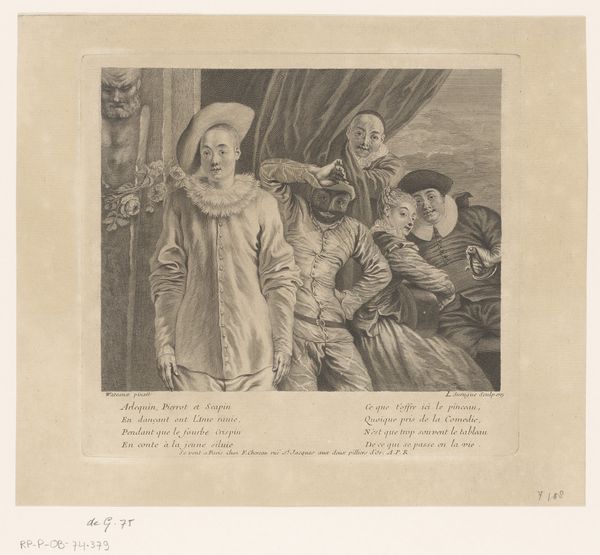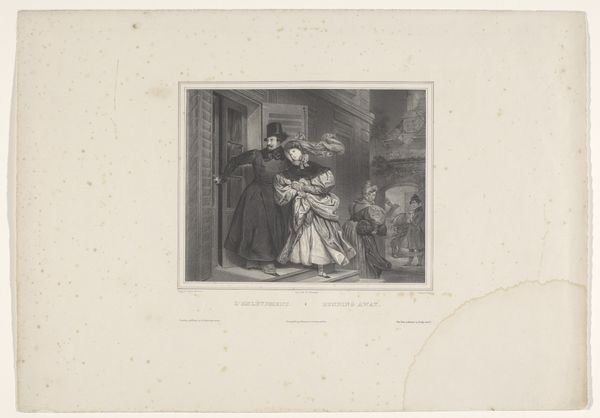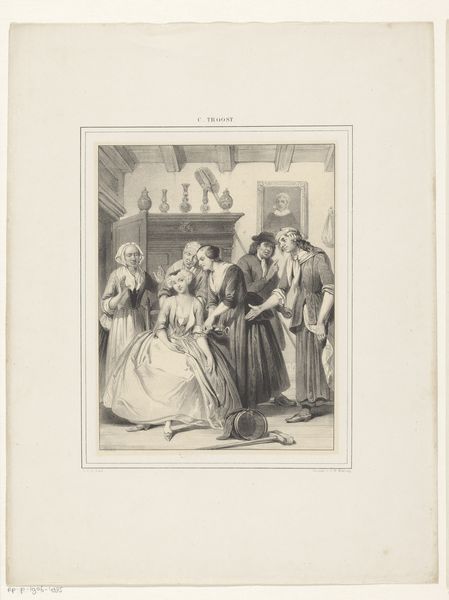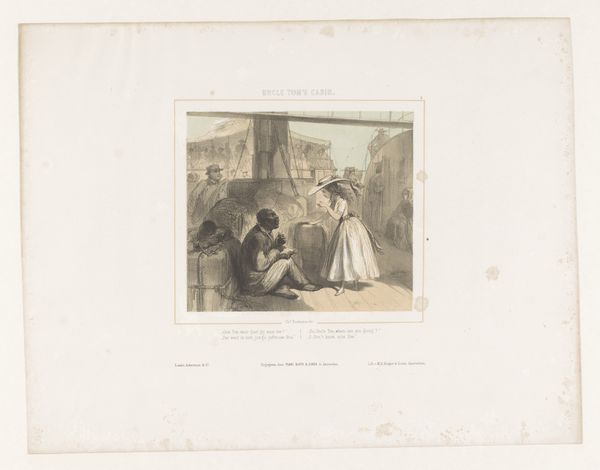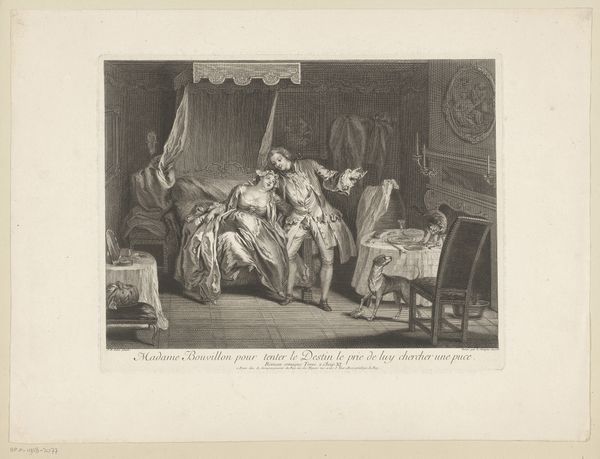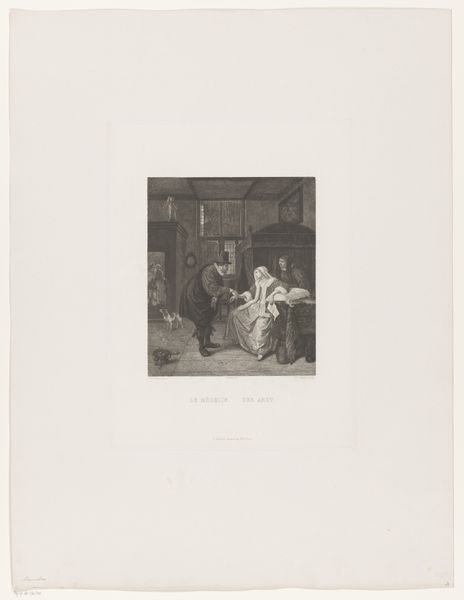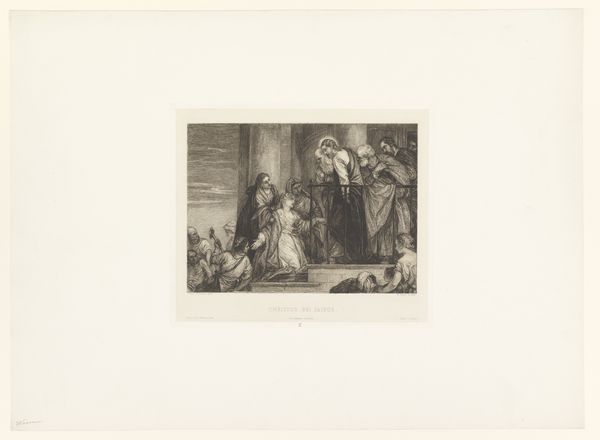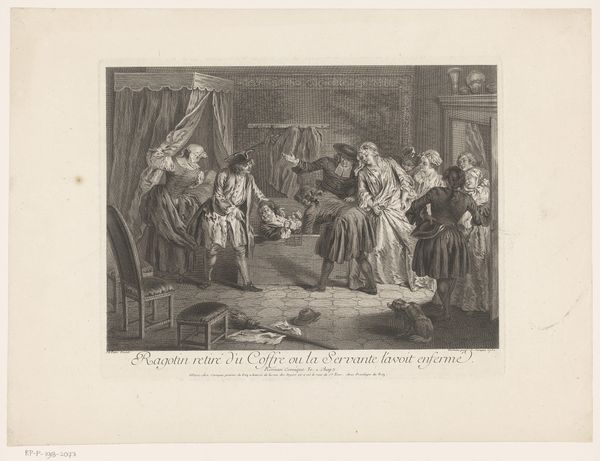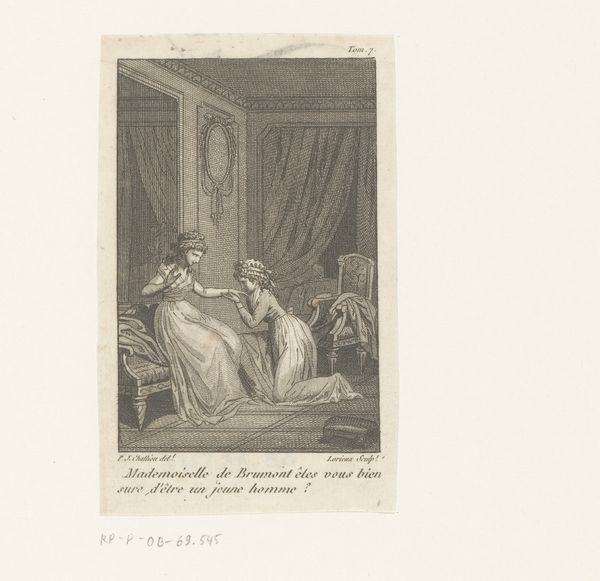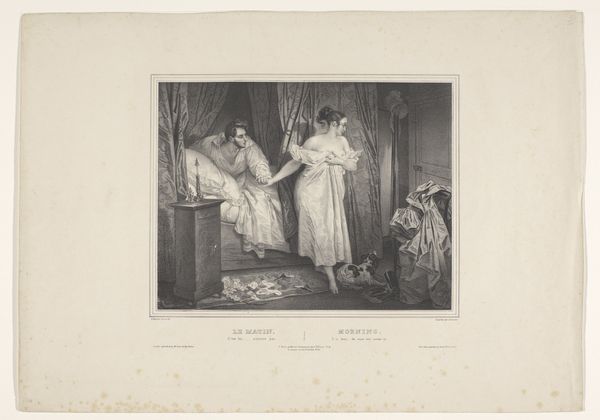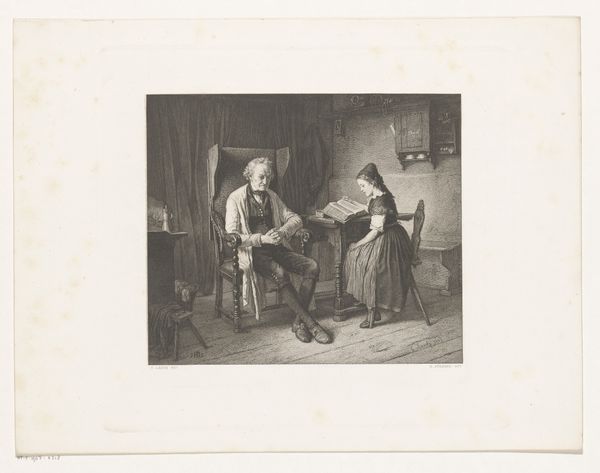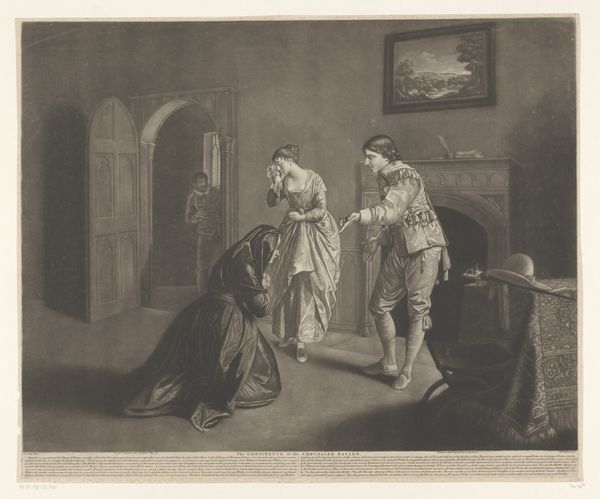
Ziek kind in bed vergezeld door knielende moeder en drie andere personen 1831 - 1871
0:00
0:00
#
photo of handprinted image
#
aged paper
#
toned paper
#
light pencil work
#
photo restoration
#
ink paper printed
#
light coloured
#
nude colour palette
#
watercolour illustration
#
watercolor
Dimensions: height 309 mm, width 430 mm
Copyright: Rijks Museum: Open Domain
Curator: The piece before us, likely dating from between 1831 and 1871, is titled "Sick Child in Bed Accompanied by a Kneeling Mother and Three Other People," attributed to Jean-Pierre Moynet. It appears to be an ink paper print. What are your immediate reactions to this tableau? Editor: Oh, wow. Heavy. The dim light, the somber figures... there's this palpable weight of anxiety in the room. Like everyone is holding their breath, hoping, praying. It's a small stage for a huge drama, really pulls you in with its muted colour. Curator: The title highlights a hierarchy of care, centered around the maternal role. Considering it's labelled “The Merit of Women,” do you believe the image confines these figures within the traditional 19th-century ideal of domesticity? Editor: Hmmm. Good question. On the surface, absolutely. Kneeling mother, sympathetic elders, helpless child. Checks all the boxes of passive feminine virtue. But maybe there's a subversive read, like it is more focused on community. You could see this as portraying an immense and underappreciated form of labour performed by women and female support networks. Curator: Precisely. By presenting a scene of female empathy, the image prompts us to consider how society constructs notions of compassion and places them as the duty of women, thus highlighting their potential societal contributions when allowed participation beyond merely "mothering." It is important to also explore this period through how patriarchy is re-inscribed through these visuals, while acknowledging the strength and importance of the community support evident in the illustration. Editor: Yeah, so true! Looking again, I can almost hear the quiet rustle of clothes, the hushed whispers, all this feminine energy focused on this one small life...and yet the men in the image look so awkwardly staged. It gives off how social roles and limited access of medical assistance puts the burden onto their family members during a time of crisis, reflecting the time period but simultaneously revealing an unbalanced power. Curator: Yes, and the positioning of the kneeling mother as the focal point underscores her perceived importance as both a caregiver and an intercessor. But one cannot divorce this reading from broader historical narratives of familial duties shaped through Victorian ethics and sentimental aesthetics. It really does invite that type of analysis, looking at identity, politics, even race if we want to address why particular demographics were absent from certain domestic interiors, while simultaneously portraying the resilience of women during a time when patriarchal norms shaped domestic structures. Editor: Definitely leaves you thinking, doesn't it? A window into a specific time, a potent mix of emotion, and social commentary baked right in. I’d definitely say I learned more just looking through these multiple angles!
Comments
No comments
Be the first to comment and join the conversation on the ultimate creative platform.
